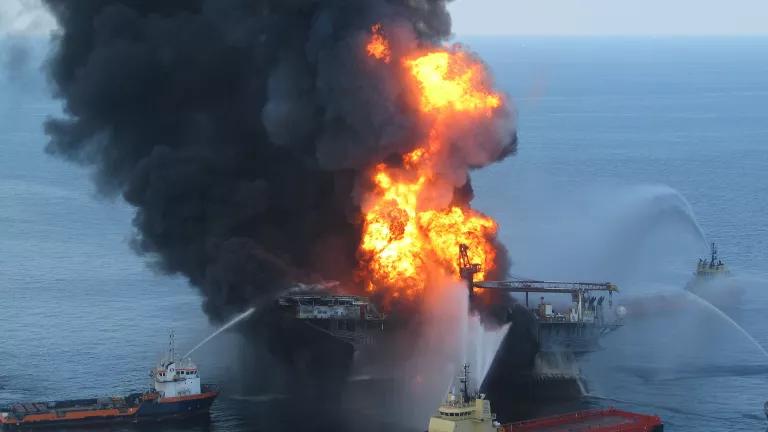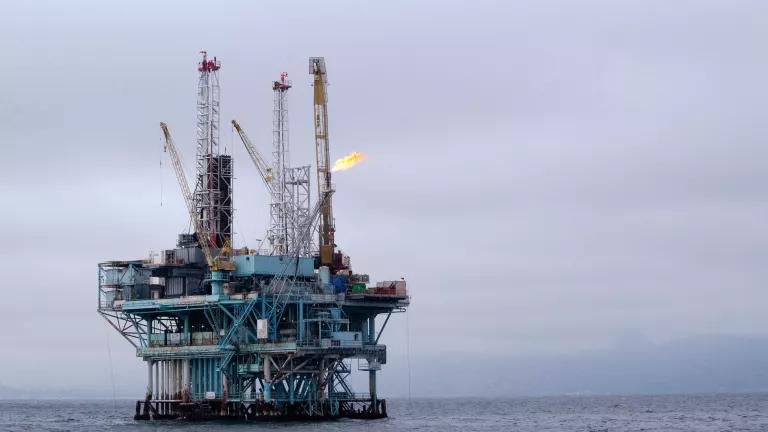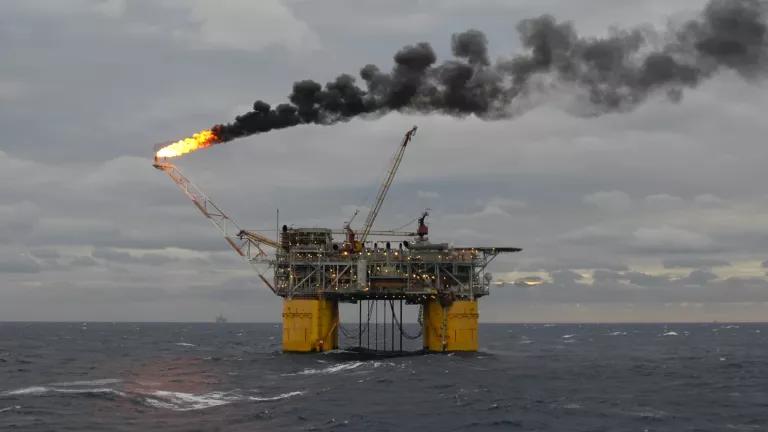Offshore Drilling: The 5-Year Program
The next five-year plan is a huge opportunity for the Biden administration to take major climate action with long-term consequences.

Oil on the surface of the Gulf of Mexico on May 6, 2010 due to the Deepwater Horizon disaster.
With a worsening climate and biodiversity crisis, and repeated dire warnings by the IPCC and IEA about the urgency of getting off fossil fuels in order to sustain a habitable planet, you may find it surprising that the U.S. is even contemplating expanded offshore leasing for oil and gas. This is particularly true considering that new offshore leasing would do NOTHING to address current high energy prices, as my colleague wrote about here, including because it takes five or more years for resources from new offshore leasing to come online.
But indeed, as required under the Outer Continental Shelf Leasing Act (OCSLA), the Biden Administration is gearing up to release the country’s next five-year program for offshore oil and gas development. Below is an overview of what this program is and why it matters.
But before we get into the five-year program, a little more background on why this wonky process matters. Offshore drilling threatens the health of our ocean, our climate, and our coastal communities. Catastrophic oil spills, like the 2010 disaster on the Deepwater Horizon oil rig, the Exxon Valdez spill in Alaska, and the more recent Huntington Beach spill in California, cause ecological, economic, and public health damages that can last for decades. The Biden Administration has the opportunity to put forth an offshore oil and gas plan with NO new lease sales for the next five years. This would make a big difference for the climate, communities, and the environment.
Even without any new offshore lease sales, there is enough oil and gas in existing leases in the Gulf that production at current levels could continue for more than a decade, at which point existing conservation requirements will have made a serious dent in demand and reduced the need for Gulf oil. Oil and gas companies advocating for new leasing are determined simply to lock in drilling for decades to come and increase profits, not to provide any help at the pump today. What’s the true solution? Building out clean and affordable energy sources so that we are no longer at the mercy of the oil industry and foreign governments.

Oil washes ashore on July 20, 2010 after an oil-spill in the Port of Dalian, China.
What is the 5-year program?
The U.S. conducts offshore oil and gas leasing through the Department of Interior’s Bureau of Ocean Energy Management (BOEM). Under OCSLA Section 18(a), the Secretary of the Interior is required to propose a five-year schedule of oil and gas lease sales which she “determines will best meet national energy needs for the five-year period following its approval.” BOEM is tasked with identifying the ocean areas to be leased, as well as scheduling lease sales for the following five years. BOEM must also consider the effect of leasing on the environment and communities.
How do people and communities engage in this process?
The current 5-year program, finalized under the Obama administration, expires at the end of June. The Biden Administration will offer the first opportunity for public comment on the next program when BOEM publishes a proposed program and a draft environmental impact statement, which is expected soon. That publication will open a 90-day public comment period where community members can weigh in on the proposal. There are two ways to give BOEM input: by submitting an official comment online to the federal register, or by attending and speaking at listening sessions/public hearings. After this 90-day comment period, BOEM will review this public input before putting out a final five-year program - which can take months.

What happens next?
While past leasing proposals have included large swaths of the U.S. coastline, including the Atlantic, Pacific, and the Arctic, none of these areas were ultimately proposed for leasing. Today, the bulk of offshore drilling happens in the Gulf of Mexico. Once the Biden administration makes a proposal, it is going to be key to engage in this 90-day comment period. That’s where we can have the most influence on reducing the size and number of any areas proposed for leasing and, in turn, the country’s reliance on dirty fossil fuels. Once the administration finalizes its final five-year program, it is not easily changed, and opponents need to then engage on a lease sale-by-lease sale basis.
Why is this upcoming five-year program so critical?
The next five-year plan is a huge opportunity for the Biden Administration to take major climate action with long-term consequences. No new offshore leasing would mean we aren’t locking ourselves into decades of more fossil fuel use and the impacts to communities that come along with that. We must prioritize a clean energy future by asking the Biden Administration to offer a five-year program with no proposed leasing. By prioritizing communities and climate over fossil fuel extraction, the administration would be supporting its commitments to reduce emissions and increase climate resilience while protecting vulnerable communities and safeguarding our natural resources.



